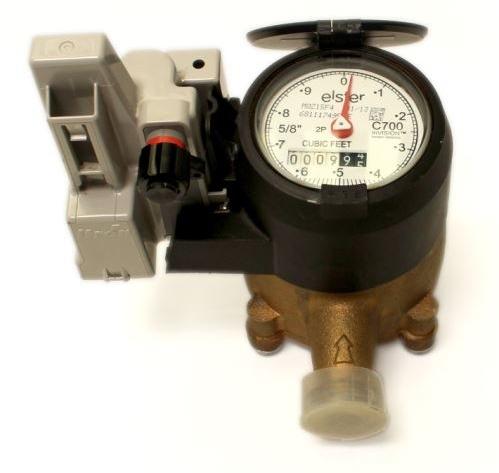Almost everyone maintains their own unique way of thinking involving Dealing with Low Water Pressure in Your Home.

Low tide stress in your house can be a frustrating problem, influencing everything from bathing to washing recipes. If you're experiencing weak water flow, there are a number of possible reasons and solutions to check out. In this guide, we'll go over typical reasons for low water pressure and practical steps to deal with the concern successfully.
Introduction to Low Water Stress
Low tide pressure takes place when the circulation of water from your taps, showers, and various other fixtures is weaker than typical. This can make day-to-day jobs a lot more tough and much less effective. Comprehending the root causes of low water stress is important to locating the right solution.
Usual Root Causes Of Low Tide Stress
Pipe Obstructions
Gradually, pipes can come to be clogged with natural resource, debris, or debris, limiting the flow of water. This is a common issue in older homes with galvanized steel pipelines.
Deterioration
Corrosion within pipes can result in leaks and minimized water pressure. Corrosion build-up can constrict water circulation, particularly in aging plumbing systems.
Faulty Pressure Regulatory Authorities
Stress regulatory authorities are in charge of keeping regular water pressure in your home. If they malfunction, it can cause low tide stress or irregular circulation throughout the house.
Community Water Supply Issues
Occasionally, the trouble lies outside your home. Community water concerns, such as main line leaks or upkeep work, can temporarily lower water pressure in your location.
Exactly How to Identify Low Tide Stress
Checking Faucets and Components
Start by testing the water stress at different faucets and components throughout your home. If the concern is isolated to specific areas, it may suggest localized issues.
Examining Pipes
Examine visible pipes for indicators of leaks, deterioration, or obstructions. Pay attention to any unusual audios, such as banging or rattling pipes, which can indicate problems within the plumbing system.
Consulting with a Plumber
If you're unable to pinpoint the root cause of low tide stress, think about employing a professional plumber to conduct a thorough assessment. They can recognize underlying problems and suggest ideal solutions.
Do It Yourself Solutions to Take Care Of Low Water Stress
Cleaning Up Aerators and Showerheads
Mineral deposits can accumulate in aerators and showerheads, reducing water circulation. Eliminate and clean these elements consistently to boost water pressure.
Flushing Water Heater
Sediment accumulation in the hot water heater can restrict flow and reduce effectiveness. Flushing the container periodically aids remove sediment and preserve optimal performance.
Examining Stress Regulatory Authority
Make certain that the pressure regulator is working correctly. Adjusting or replacing the regulatory authority can aid recover correct water stress throughout your home.
Cleaning Clogs in Water Lines
For small clogs, try utilizing a plumbing snake or chemical drain cleaner to clear blockages in pipes. Beware when making use of chemicals and follow safety and security guidelines.
When to Call an Expert Plumber
If DIY initiatives fail to resolve the issue or if you think substantial plumbing troubles, it's best to seek aid from an accredited plumber. They have the competence and tools to attend to complex problems securely and properly.
Safety Nets to Keep Water Pressure
Normal Maintenance
Arrange routine maintenance for your plumbing system to stop issues such as corrosion, leakages, and obstructions. Addressing minor problems early can assist stay clear of more substantial repair work in the future.
Setting Up a Stress Booster
Think about mounting a pressure booster pump to improve water stress in locations with constantly reduced flow. This can be particularly advantageous for multi-story homes or properties with high-demand components.
Surveillance Water Usage
Be mindful of water use habits and prevent overtaxing the plumbing system. Straightforward modifications, such as incredible showers and laundry tons, can aid maintain ample water stress.
Final thought
Taking care of low water pressure can be aggravating, yet identifying the underlying causes and applying proper solutions can restore optimal circulation throughout your home. Whether it's cleaning up aerators, checking pipes, or seeking advice from a plumber, taking proactive actions can make sure a constant supply of water for your everyday requirements.
FOUR WAYS TO FIX LOW WATER PRESSURE NOW
Turning on a shower or faucet only to find the water comes out in a sad, slow drizzle is never a good feeling. How exactly are you supposed to wash a pan or take a quick shower when it takes 10 minutes just to rinse off a little soap? The good news is that when your water pressure is bad, there's always a cause: typically one that can be easily fixed. Here are some of the most common causes of low pressure and what you can do to fix the issue:
DEBRIS AND MINERAL DEPOSIT BUILDUPS
If you notice low water pressure from just one or two of the fixtures in your house, the problem likely has to do with debris buildup. Water is full of minerals and other debris, all of which can accumulate in your pipes and on your fixtures. This can cause a blockage that affects how much water flows through. To fix this, try filling a small plastic bag with white vinegar, and use a rubber band to hang it around your showerhead or faucet. Let the head of the fixture soak for a few hours, and the vinegar should loosen the deposits.
WATER LEAKS
Leaks are another common cause of low water pressure. If water is flowing out of your plumbing through a hole or crack before it can reach your fixture, the pressure coming out of the faucet or showerhead will be lower. A plumbing professional is your best bet for finding and repairing a leak in your water supply pipes.
Leaks are another common cause of low water pressure. If water is flowing out of your plumbing through a hole or crack before it can reach your fixture, the pressure coming out of the faucet or showerhead will be lower. A plumbing professional is your best bet for finding and repairing a leak in your water supply pipes.
FOUR WAYS TO FIX LOW WATER PRESSURE NOW
Turning on a shower or faucet only to find the water comes out in a sad, slow drizzle is never a good feeling. How exactly are you supposed to wash a pan or take a quick shower when it takes 10 minutes just to rinse off a little soap? The good news is that when your water pressure is bad, there's always a cause: typically one that can be easily fixed. Here are some of the most common causes of low pressure and what you can do to fix the issue:
DEBRIS AND MINERAL DEPOSIT BUILDUPS
If you notice low water pressure from just one or two of the fixtures in your house, the problem likely has to do with debris buildup. Water is full of minerals and other debris, all of which can accumulate in your pipes and on your fixtures. This can cause a blockage that affects how much water flows through. To fix this, try filling a small plastic bag with white vinegar, and use a rubber band to hang it around your showerhead or faucet. Let the head of the fixture soak for a few hours, and the vinegar should loosen the deposits.
WATER LEAKS
Leaks are another common cause of low water pressure. If water is flowing out of your plumbing through a hole or crack before it can reach your fixture, the pressure coming out of the faucet or showerhead will be lower. A plumbing professional is your best bet for finding and repairing a leak in your water supply pipes.
Leaks are another common cause of low water pressure. If water is flowing out of your plumbing through a hole or crack before it can reach your fixture, the pressure coming out of the faucet or showerhead will be lower. A plumbing professional is your best bet for finding and repairing a leak in your water supply pipes.
A VALVE ISSUE
If you have low water pressure throughout your home, check your main shut-off valve to make sure it's completely open. You may also want to see if there's a pressure-reducing valve installed. If there is, have a plumber help you adjust the settings to get the pressure you're looking for.
OTHERS USING WATER
Believe it or not, your low water pressure could be caused by your neighbors. If you notice low pressure at certain times of day, it may be because you and the people living next to you have similar schedules - when everyone is showering at the same time, the pressure will be lower in every home. Low pressure throughout the neighborhood may also be caused by an issue with your municipal water supply. If that's the case, call the supplier to see if they're working on the issue.
https://www.rotorooter.com/blog/water-leaking/low-water-pressure-fixes/

I was brought to that article on Low Water Pressure in the House? from a buddy on another web address. Sharing is good. Helping people is fun. Bless you for being here. Kindly stop by our blog back soon.
Book Your Appointment